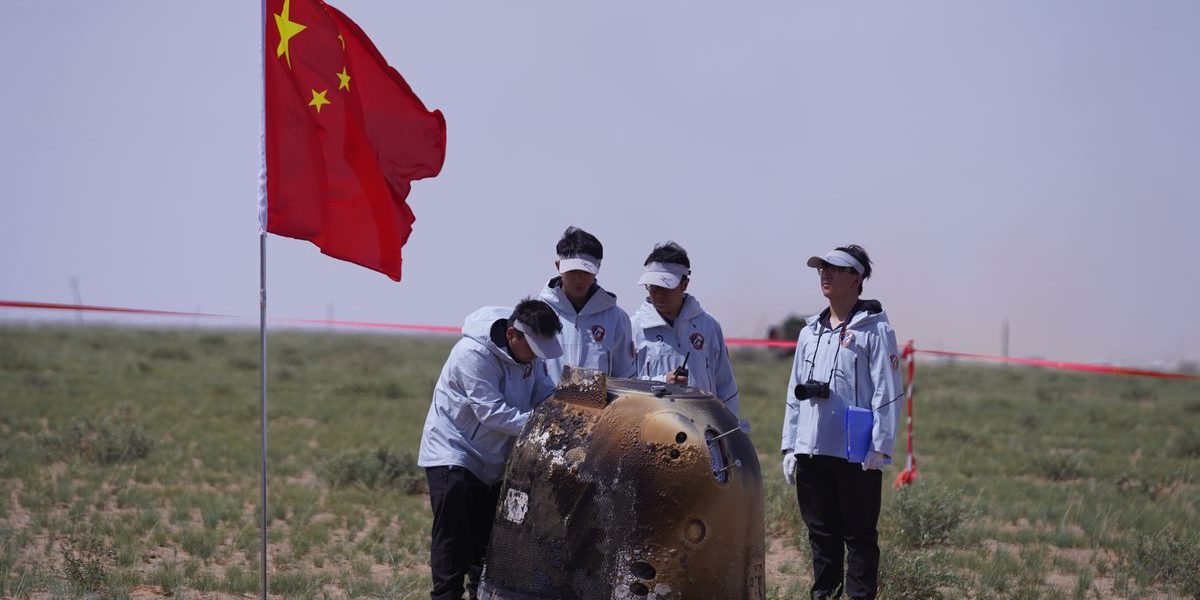The First Soil Samples from the Far Side of the Moon and the Case for a Global Event: Why Chang’e 6 Arrived on Earth Earlier than Apollo
The first soil samples taken from the far side of the Moon arrived on Earth today. China’s Chang’e 6 spacecraft landed with the precious cargo in Inner Mongolia today at 2:07PM Beijing time, according to state media.
Prior to Apollo, researchers had thought that it began when a bunch of asteroids near Earth slowly coalesced. But the minerals in the moon rocks that the astronauts brought back suggested a much more violent origin story, according to Richard Carlson, director emeritus of the Earth and Planets Laboratory at Carnegie Science in Washington D.C.
The theory is accepted but the evidence is not as plentiful as it could be. The Apollo missions landing on the near side of the moon is the only one that always faces the Earth.
China’s latest robotic probe, called Chang’e 6, landed on the far side of the moon. That’s a much more challenging task because the far side faces away from our planet and there’s no direct way to communicate. Instead, Chang’e 6 relied on a satellite orbiting the moon to relay its signal.
He says that if the Chang’e 6 sample gives the same age as Apollo it is likely you are looking at a global event. If not, then the textbooks will have to be rewritten again.
Carlson’s request for a proposal to study the far side of the Moon with a human-planet hemisphere
Jim Head says that there are many mysteries on the far side of the moon. He says the far side does not have the lava-flooded areas that are on the near side.
There are many differences between the far side and the near side. “It’s a really critical issue. You can’t understand the origin of a planet with one hemisphere.”
Over the moon is one of the items that are in competition with the U.S. and China. Both nations say they want to send humans back to the lunar surface by sometime around the end of the decade.
But China has also offered to share at least some of its new moon samples with American researchers, and NASA is allowing the U.S. scientists to submit proposals. Carlson is for it.
It will help researchers better understand the terrain of the Moon’s far side and may shed some light on the early history of the Moon and Earth. The milestone in the global space race is to establish a presence on the Moon.
Craters in the South Pole – Aitken Basin: The Chinan National Space Administration, Beijing, and the Moon’s Far Side
President Xi Jinping congratulated the China National Space Administration, calling it a “landmark achievement in our country’s efforts at becoming a space and technological power,” according to The Associated Press.
The impact crater in the South Pole–Aitken Basin is believed to be 4.26 billion years old. There are craters on the far side of the Moon, which are the result of ancient crashes. How these craters formed and what materials they hold are important questions for piecing together the Moon’s history.
“This also has implications for understanding the origins of life on Earth,” the nonprofit The Planetary Society wrote in a post about Chang’e 6 earlier this year, citing a theory that asteroids might have carried water and organic materials to Earth during an event known as the Late Heavy Bombardment. There’s been more scrutiny lately into how fierce that bombardment actually was. Long-awaited samples from the far side of the Moon could help start to answer some of these questions.
China plans to send a craft to the moon in order to look for water and other resources that could support future missions to the moon. The Artemis III mission will send humans to the moon’s south pole in 2026.

